In Latin, fritillaria is designated as "hazel grouse", in common people it is called "royal crown". Regardless of the name and variety, fritillaria can be called one of the brightest and most fragrant representatives of the floral world.
A tall and stately plant will be a great addition to the design of a flower bed or garden. The fritillaria flower will not leave indifferent any gardener, and the cultivation of the "royal crown" will not be difficult, since the hazel grouse, the flower is unpretentious and gets along well with neighbors in the garden.
The content of the article:
- Fritillaria landing
- Fritillaria flower care
- Fritillaria varieties
- Fritillaria "Rubra"
- Fritillaria "Grouse"
- Fritillaria "Aurora"
- Fritillaria "Imperial"
- Fritillaria "Meleagris" and "Uva Vulpis"
- Fitillaria "Lutea"
- Fritillaria "Radde"
- Fritillaria "Striped Beauty"
- Fritillaria "Persian" (black)
- Fritillaria "William Rex"
- Fritillaria variety "Mikhailovsky"
- Fritillaria needle-petaled "Akmopetala"
- Fritillaria "Raskal Bach"
- Fritillaria "Garland Star"
- Secrets of the lush bloom of fritillaria
Fritillaria landing
The correct organization of autumn planting and care of the fritillaria flower, as well as timely control over the plantings, will reward you in the spring with fragrant, lush flowering and a colorful picture of bright hazel grouse buds.
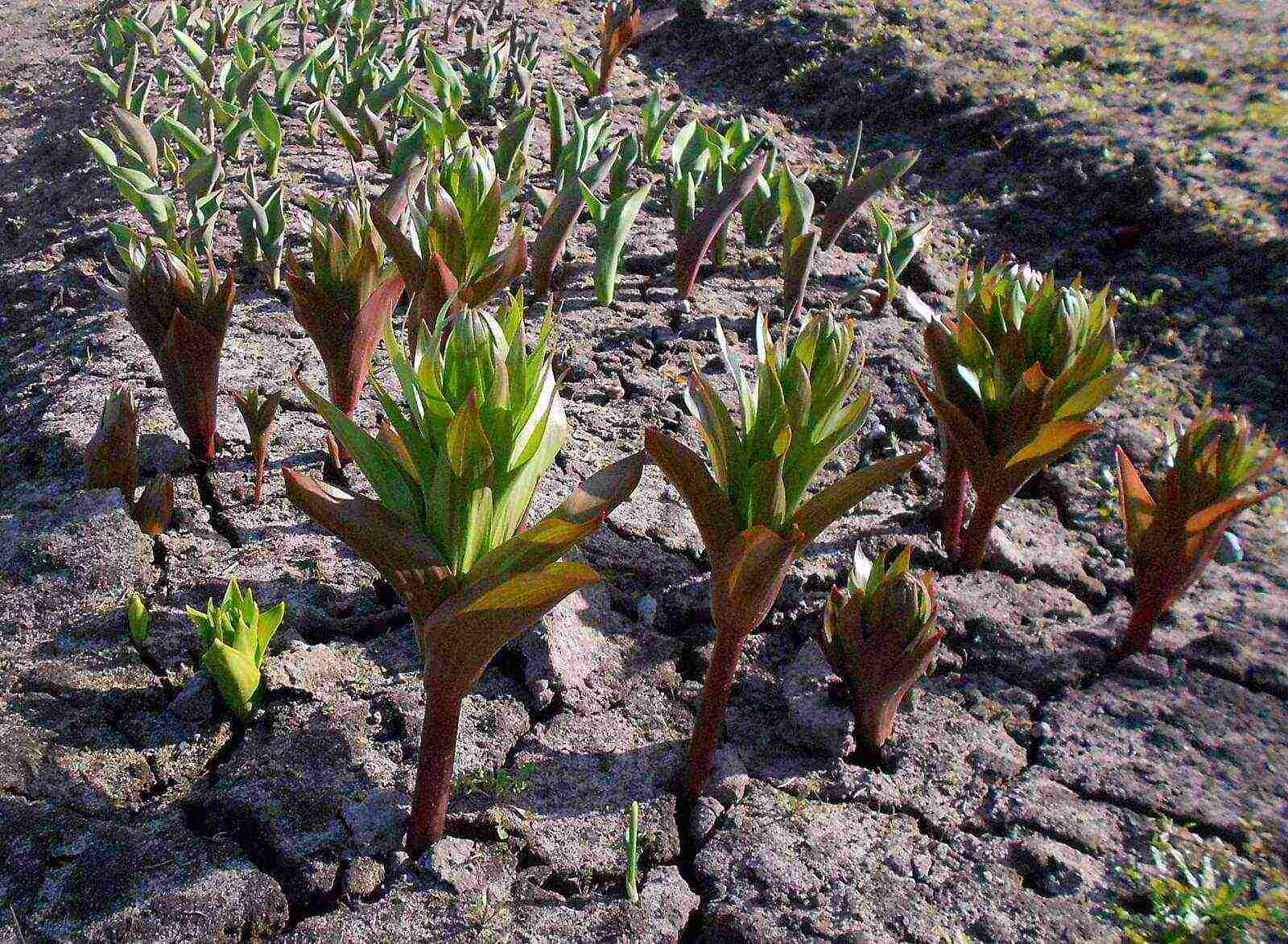 Fritillaria is in demand among most flower growers, for the variety of color palette of inflorescences and relative unpretentiousness.
Fritillaria is in demand among most flower growers, for the variety of color palette of inflorescences and relative unpretentiousness.
Fritillaria is a colorful representative of the lily family and has about a hundred varieties of its species. Therefore, the choice of a suitable variety of hazel grouse, specifically for your site, will not be difficult.
Fritillaria prefers fertile soil, with an average pH level, not clogged, loose and aerated. The site for planting should be well lit, but with variable solar activity. In too shaded areas, fritillaria will stretch upward, depriving the buds of nutrients, and this will affect the size and color of the inflorescences.
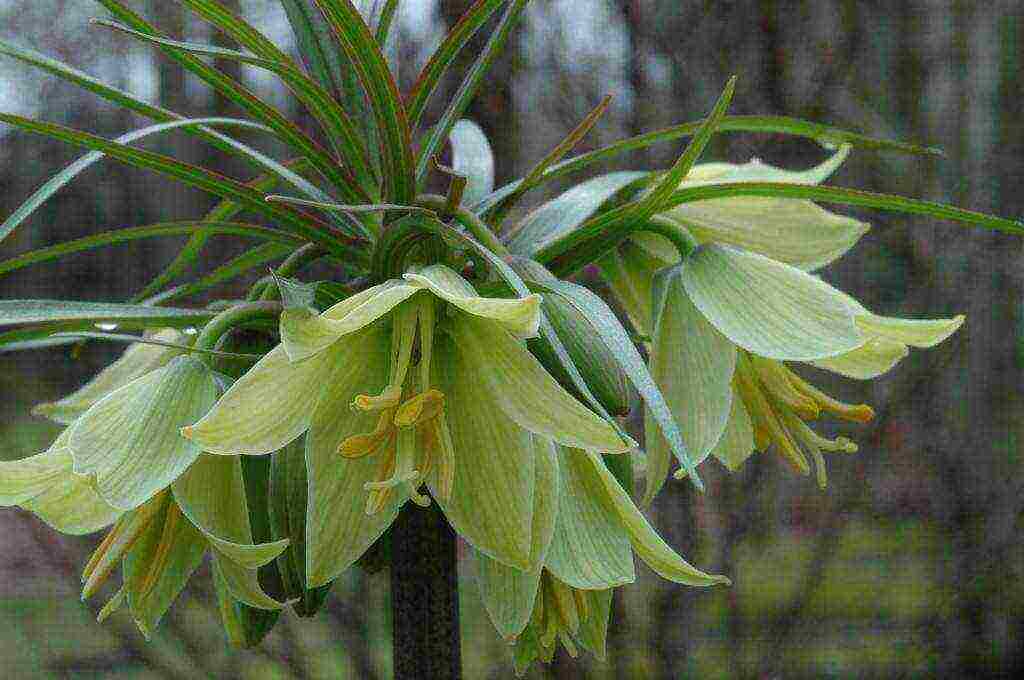 If your site for planting hazel grouse does not meet the above requirements, do not be upset. The scarcity of soil is easy to fix, for this you need to prepare the site in advance. Having dug up the soil at least on a shovel bayonet, apply organic fertilizers 5 buckets for every 5 square meters. m. of land.
If your site for planting hazel grouse does not meet the above requirements, do not be upset. The scarcity of soil is easy to fix, for this you need to prepare the site in advance. Having dug up the soil at least on a shovel bayonet, apply organic fertilizers 5 buckets for every 5 square meters. m. of land.
Planting fritillaria begins in late August, early September, but not later, since the bulb must take root and have time to gain strength for the upcoming release of the peduncle.
Fritillaria is a large, weighty plant; with a thick, fleshy, high peduncle, so the planting depth should be at least 25 cm. If the soil of your plot is “clogged” or heavy, shallow planting of the bulb up to 25 cm will facilitate germination. But, the best solution would be to "lighten" such a soil, for this add sand (bucket per 1 sq. M.) And peat (1.5 buckets per sq. M.) Into the soil and dig it up.
To correctly calculate the planting depth of the fritillaria bulb, multiply the diameter of the bulb by three.
 Before planting, fritillaria bulbs are examined, damaged and suspicious areas are cut off, soaked for several minutes in a solution of potassium permanganate, dried, sprinkling the slices with activated carbon or ash, then planted.
Before planting, fritillaria bulbs are examined, damaged and suspicious areas are cut off, soaked for several minutes in a solution of potassium permanganate, dried, sprinkling the slices with activated carbon or ash, then planted.
The wells for planting fritillaria must be formed so that the flowers do not interfere with each other, the observance of a distance between plants of 30 cm will be sufficient. The depth of the hole varies from 25 cm on heavy soils and 35 cm on light soils. A centimeter layer of sand is laid at the bottom of the hole, which will serve as drainage, the soil is abundantly moistened, then the bulb is laid and sprinkled with fertilized soil.
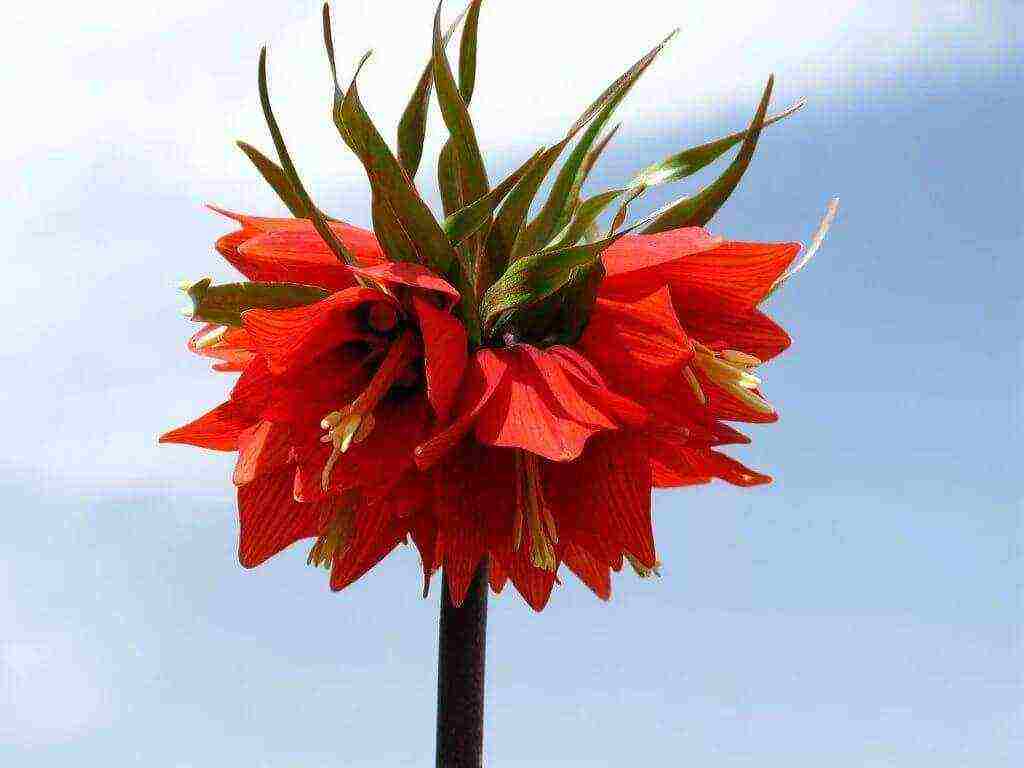 The future flowering and reproduction of the plant will depend on the depth of planting of the fritillaria bulb. The larger the bulb, the deeper the embedding. For fritillaria, a balanced level of soil acidity is required, the flower will not grow on acidic soils, the same applies to swampiness, hazel grouse does not tolerate stagnation of water.
The future flowering and reproduction of the plant will depend on the depth of planting of the fritillaria bulb. The larger the bulb, the deeper the embedding. For fritillaria, a balanced level of soil acidity is required, the flower will not grow on acidic soils, the same applies to swampiness, hazel grouse does not tolerate stagnation of water.
Before planting, think in advance about the dispersion of flowers over the site, fritillaria blooms all spring, and then dies off, so it would be better to plant hazel grouse bulbs nearby with other flowers so that the flower bed does not seem empty.
Fritillaria flower care
Caring for fritillaria in the open field does not require significant effort, and includes the main agrotechnical measures: weeding, hilling, watering, fertilizing. And in connection with the botanical distinctive feature of fritillaria, to absorb moisture not only from the soil, but also from the atmosphere (due to the structure of the leaves) minimizes the frequency of watering.
 Fritillaria is an unpretentious plant with great potential for luxurious flowering. But in order for the "royal crown" to please you with large inflorescences, the minimum application of fertilizers is still necessary.
Fritillaria is an unpretentious plant with great potential for luxurious flowering. But in order for the "royal crown" to please you with large inflorescences, the minimum application of fertilizers is still necessary.
Fertilization is carried out twice, before flowering and after, so that the bulb gains strength and prepares for wintering. Before fritillaria bloom, add nitrophoska or phosphorus-potassium fertilizers, water it, and after a few days add ash.
Loosening is required when the plant is just beginning to break through, and also, if you notice that the soil is crusty, once every two weeks will be sufficient for fritillaria to develop.
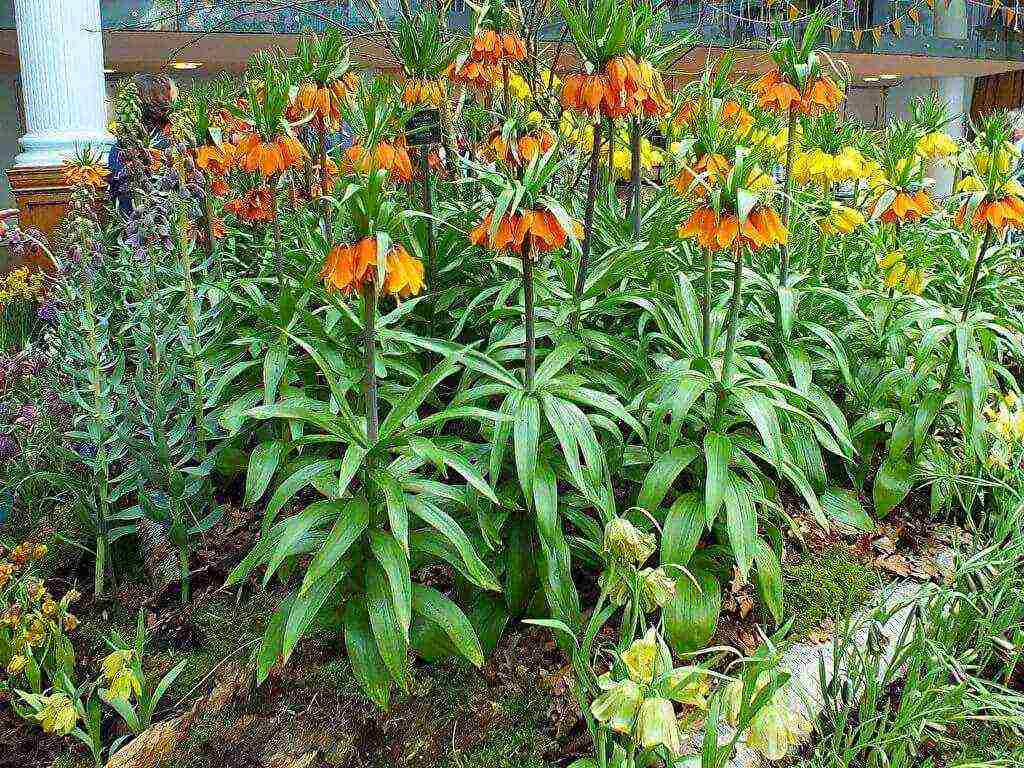 Watering is done once a week, in dry areas and on light soils twice.
Watering is done once a week, in dry areas and on light soils twice.
After the hazel grouse has faded, the peduncle is cut off, and a week later (after drying) the foliage is cut off, fritillaria is fertilized with phosphorus and potassium and watering stops. In the harsh winter, the "royal crown" is covered with mulch.
Fritillaria is resistant to diseases and attacks of harmful insects; it even repels some pests with its specific aroma.
Reproduction of fritillaria occurs both vegetatively and by seeds. Fritillaria seeds are small, ripen in a seed box, formed immediately after flowering.
After the walls of the capsule have dried, the seeds can be harvested. However, sowing hazel grouse is a painstaking and difficult occupation, since such a flower will bloom only four years later, after the formation of the bulb.
Seeds are sown in spring, in warm, fertilized soil, so that the seedlings can grow stronger for winter, with a seeding depth of 2 cm.
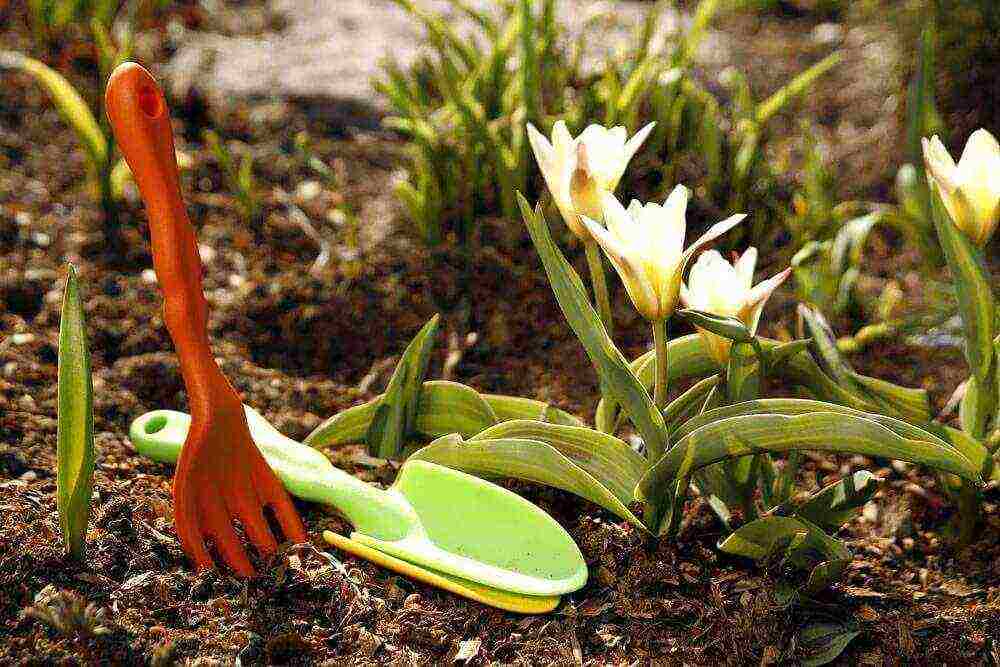 It is better to sow fritillaria in indoor conditions or in a greenhouse, wait until the plant gets stronger and forms a bulb, and then, after vernalization, plant hazel grouse in open ground.
It is better to sow fritillaria in indoor conditions or in a greenhouse, wait until the plant gets stronger and forms a bulb, and then, after vernalization, plant hazel grouse in open ground.
The vegetative way of reproduction of fritillaria occurs by division (formation of babies) of the mother's flower bulb. Transplanting new "babies" in the first year should not be done, it is necessary to give the young bulb to learn to live independently, to acquire a sufficient number of roots.
The optimal time for transplanting fritillaria is the first decade of autumn, during this period, produce and separate two-year-old babies from the mother's bulb, they are easily disconnected and there are no problems with transplantation.
Fritillaria varieties
Fritillaria has become known to the world since the 18th century; Central Europe is considered the birthplace of hazel grouse. More than one hundred varieties of the "royal crown" are grown today all over the world.
Initially, the hazel grouse had an orange color and small inflorescences, but the work of breeders has brought the flower to perfection, and the current varieties of fritillaria are striking in their beauty and diversity.
Fritillaria "Rubra"
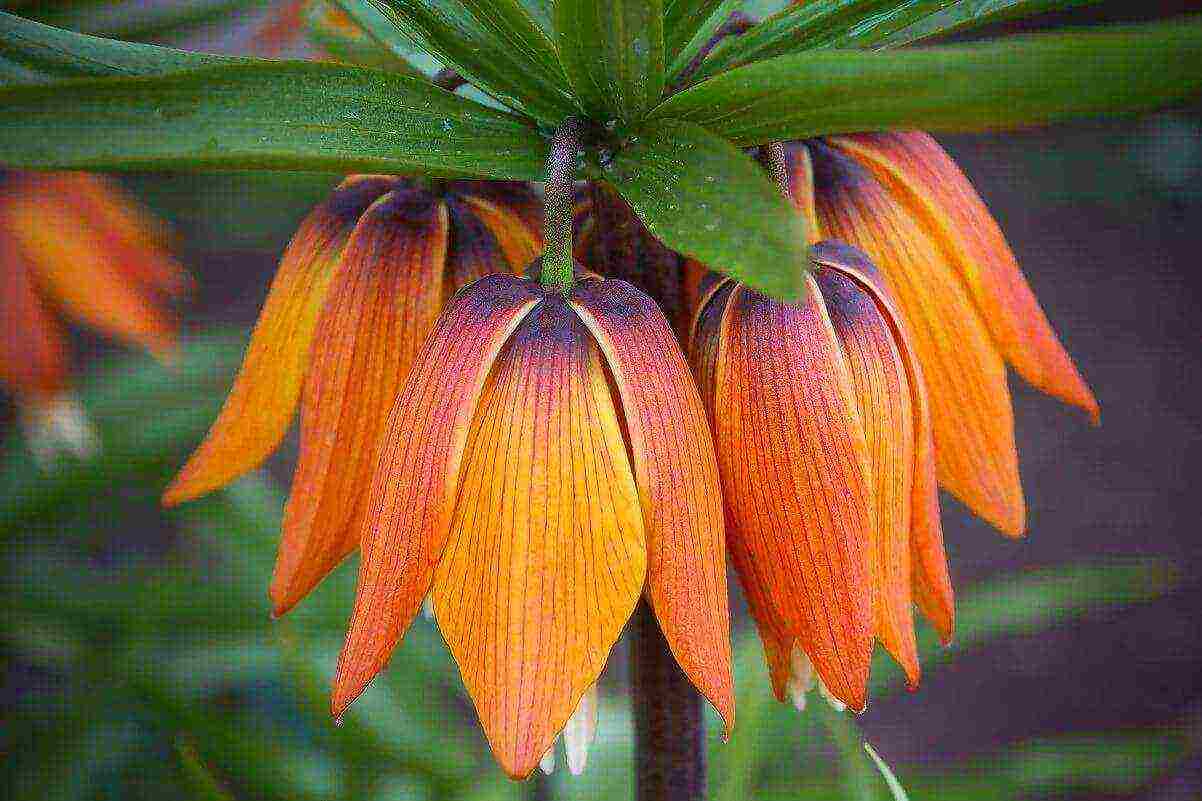 Perennial fritillaria "Rubra" has large scarlet inflorescences, emerald green leaves. Height is about 75 cm. It blooms up to three weeks, abundantly and colorfully, after "Rubra" it throws out the seed box and goes into a dormant state.Propagated vegetatively (by children) and seeds. Rubra fritillaria variety does not require special care. Suitable for both outdoor planting and potting.
Perennial fritillaria "Rubra" has large scarlet inflorescences, emerald green leaves. Height is about 75 cm. It blooms up to three weeks, abundantly and colorfully, after "Rubra" it throws out the seed box and goes into a dormant state.Propagated vegetatively (by children) and seeds. Rubra fritillaria variety does not require special care. Suitable for both outdoor planting and potting.
Fritillaria "Grouse"
The variety belongs to perennial, bulbous. It has a strong, high stem, narrow dark green leaves, large, elongated, drooping flowers.
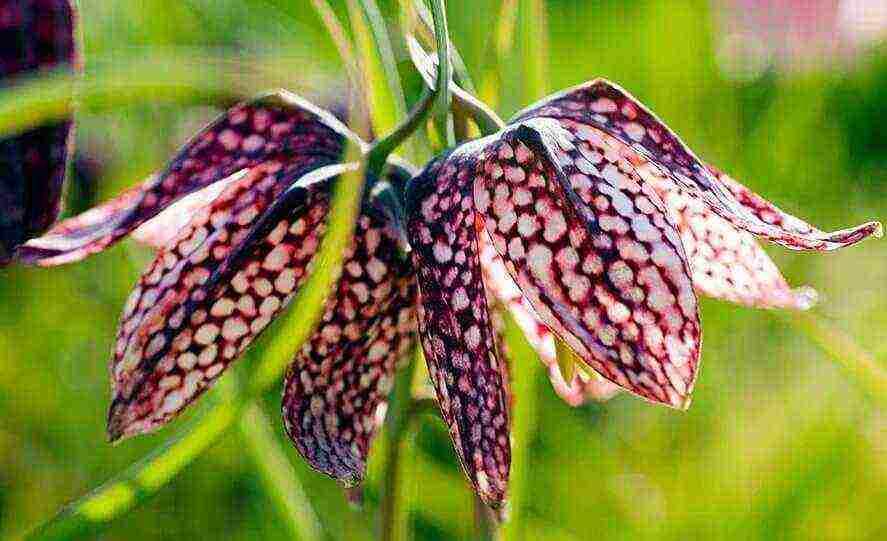 Inflorescences bloom almost simultaneously, with an interval of a day.
Inflorescences bloom almost simultaneously, with an interval of a day.
The flowers are bright orange in color, depending on the variety, they are spotty or with large veins. Flowering begins in May and lasts up to three weeks. Grouse prefers shaded areas and fertile soil. The flower multiplies quickly, without leaving and planting it quickly runs wild. The most prominent representatives of the variety can be called: Imperial hazel grouse, Kamchatsky, Caucasian, Russian, Mars, Orion, Aphrodite.
Fritillaria "Aurora"
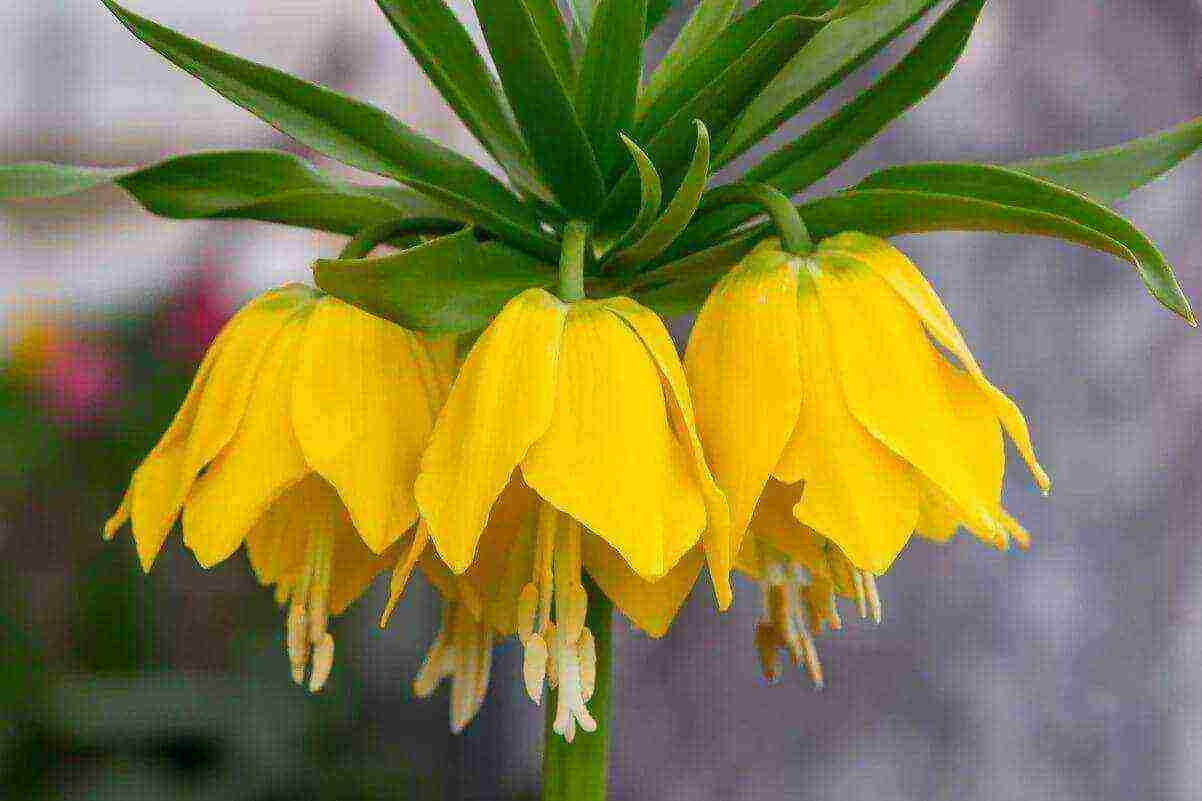 The "Aurora" variety is a perennial fritillaria. The inflorescences are similar to a lush "cap" of an orange-golden hue. The foliage of the plant is bright green. The height of the fritillaria "Aurora" is about a meter. Flowering lasts from three weeks to a month. Unpretentious and incredibly beautiful fritillaria will adorn any flower bed.
The "Aurora" variety is a perennial fritillaria. The inflorescences are similar to a lush "cap" of an orange-golden hue. The foliage of the plant is bright green. The height of the fritillaria "Aurora" is about a meter. Flowering lasts from three weeks to a month. Unpretentious and incredibly beautiful fritillaria will adorn any flower bed.
Fritillaria "Imperial"
 One of the largest inflorescences and buds is the "Imperial" fritillaria. It was this variety that was first called the "royal crown". The inflorescences are collected in a tight lush crown from bright orange to scarlet, a kind of a crown of leaves is located above the inflorescences. Unpretentious variety, blooms from May to June. Reaches up to a meter in height. Will be a great addition to any flower arrangement.
One of the largest inflorescences and buds is the "Imperial" fritillaria. It was this variety that was first called the "royal crown". The inflorescences are collected in a tight lush crown from bright orange to scarlet, a kind of a crown of leaves is located above the inflorescences. Unpretentious variety, blooms from May to June. Reaches up to a meter in height. Will be a great addition to any flower arrangement.
Fritillaria "Meleagris" and "Uva Vulpis"
Fritillaria "Uva Vulpis" belongs to the Assyrian species, is one of the most beautiful varieties. It blooms with large maroon inflorescences, the inner part of the bud is olive shade.
A flower of average height about 65 cm, with lush long foliage.
 "Variegated" and "Meleagris" variety belong to the chess type of fritillaria. They are distinguished by bright, graphic and memorable color of the petals. The stunted, sparsely deciduous stem reaches a height of up to half a meter. "Meleagris", despite its unusual color, does not require painstaking care, grows well in any garden, but without attention it quickly runs wild and becomes shallow.
"Variegated" and "Meleagris" variety belong to the chess type of fritillaria. They are distinguished by bright, graphic and memorable color of the petals. The stunted, sparsely deciduous stem reaches a height of up to half a meter. "Meleagris", despite its unusual color, does not require painstaking care, grows well in any garden, but without attention it quickly runs wild and becomes shallow.
Fitillaria "Lutea"
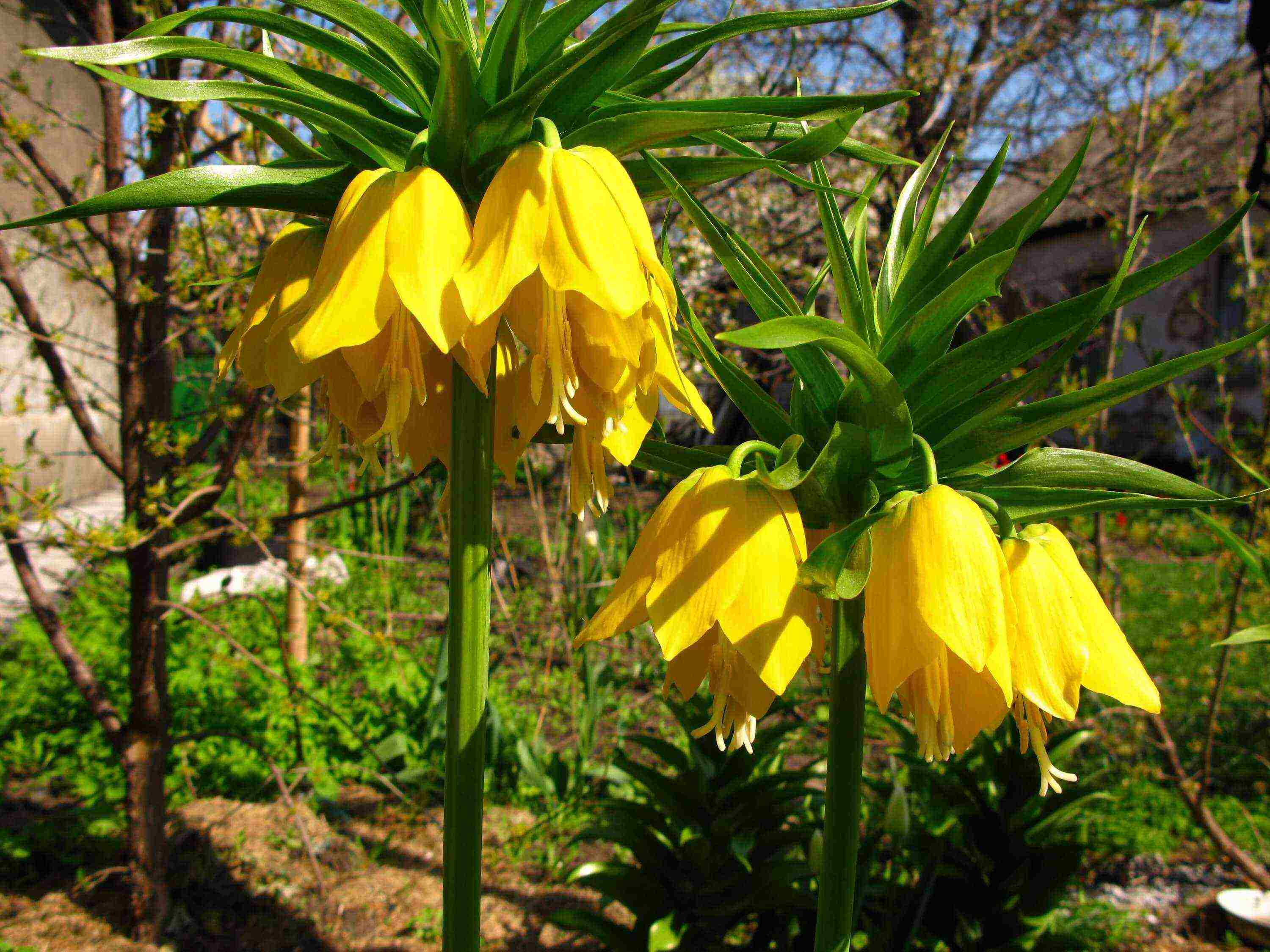 The variety is perennial, bulbous, with bright large yellow flowers. The leaves are green, the height of the stem reaches a meter in length.
The variety is perennial, bulbous, with bright large yellow flowers. The leaves are green, the height of the stem reaches a meter in length.
Reproduction occurs as in the above varieties. The flowering period lasts up to three weeks.
Fritillaria "Radde"
"Radde" is the most beautiful variety of fritillaria, flowering lasts about three weeks, with large wide inflorescences of a delicate yellow-green color. Leaves are thin, long 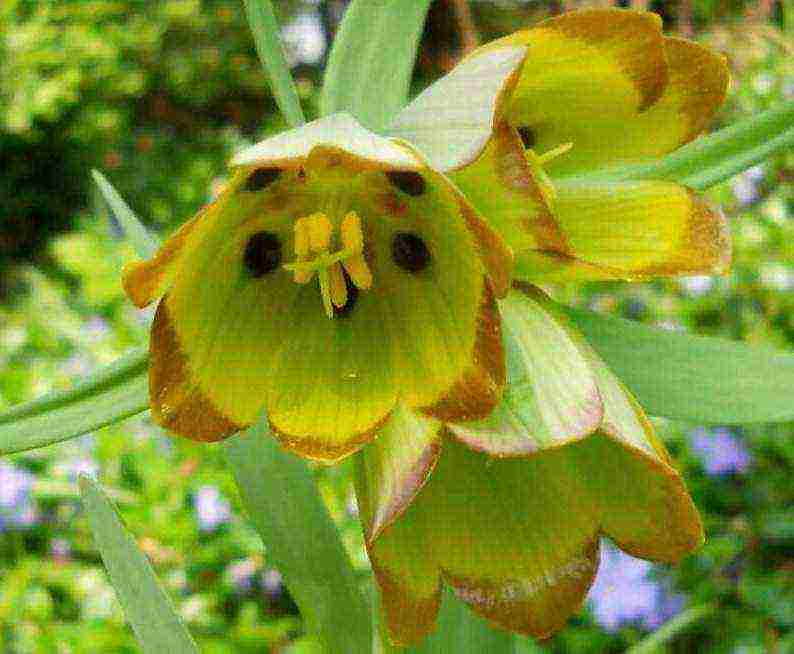 saturated green color. After flowering, "Radde" enters the dormant stage. "Radde" will respond with large and lush flowering and minimal maintenance. The variety is used for landscaping and as an addition to flower arrangements.
saturated green color. After flowering, "Radde" enters the dormant stage. "Radde" will respond with large and lush flowering and minimal maintenance. The variety is used for landscaping and as an addition to flower arrangements.
Fritillaria "Striped Beauty"
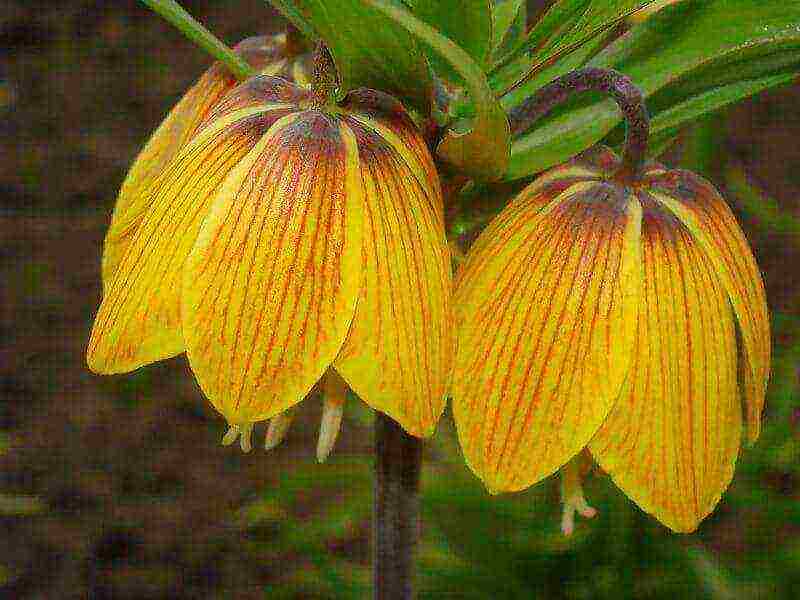 The variety is distinguished by a juicy yellow color, with numerous large veins of scarlet or burgundy color. The foliage of the plant is green, of medium length. "Striped Beauty" reaches a meter in height.
The variety is distinguished by a juicy yellow color, with numerous large veins of scarlet or burgundy color. The foliage of the plant is green, of medium length. "Striped Beauty" reaches a meter in height.
Propagated vegetatively and by seeds. It blooms colorfully, for a period of two to three weeks.
Fritillaria "Persian" (black)
Representative of the Theresia group, "Persian" fritillaria originates from Turkey and Iran. Blooms in large bells from maroon, dark blue to  black flowers, with no less amazing bluish-green leaves. The buds are collected in a vertical cone. The height of the "Persian" fritillaria reaches 90 cm in height. One peduncle can produce up to 25 buds.
black flowers, with no less amazing bluish-green leaves. The buds are collected in a vertical cone. The height of the "Persian" fritillaria reaches 90 cm in height. One peduncle can produce up to 25 buds.
Fritillaria "William Rex"
Tall plant, with dark orange flowers and purple dusting on petals and buds. Large white stamens and dark color of the inner part of the stem of the bud.The leaves are long, thin, light green. It reproduces vegetatively, by seeds, blooms up to three weeks.
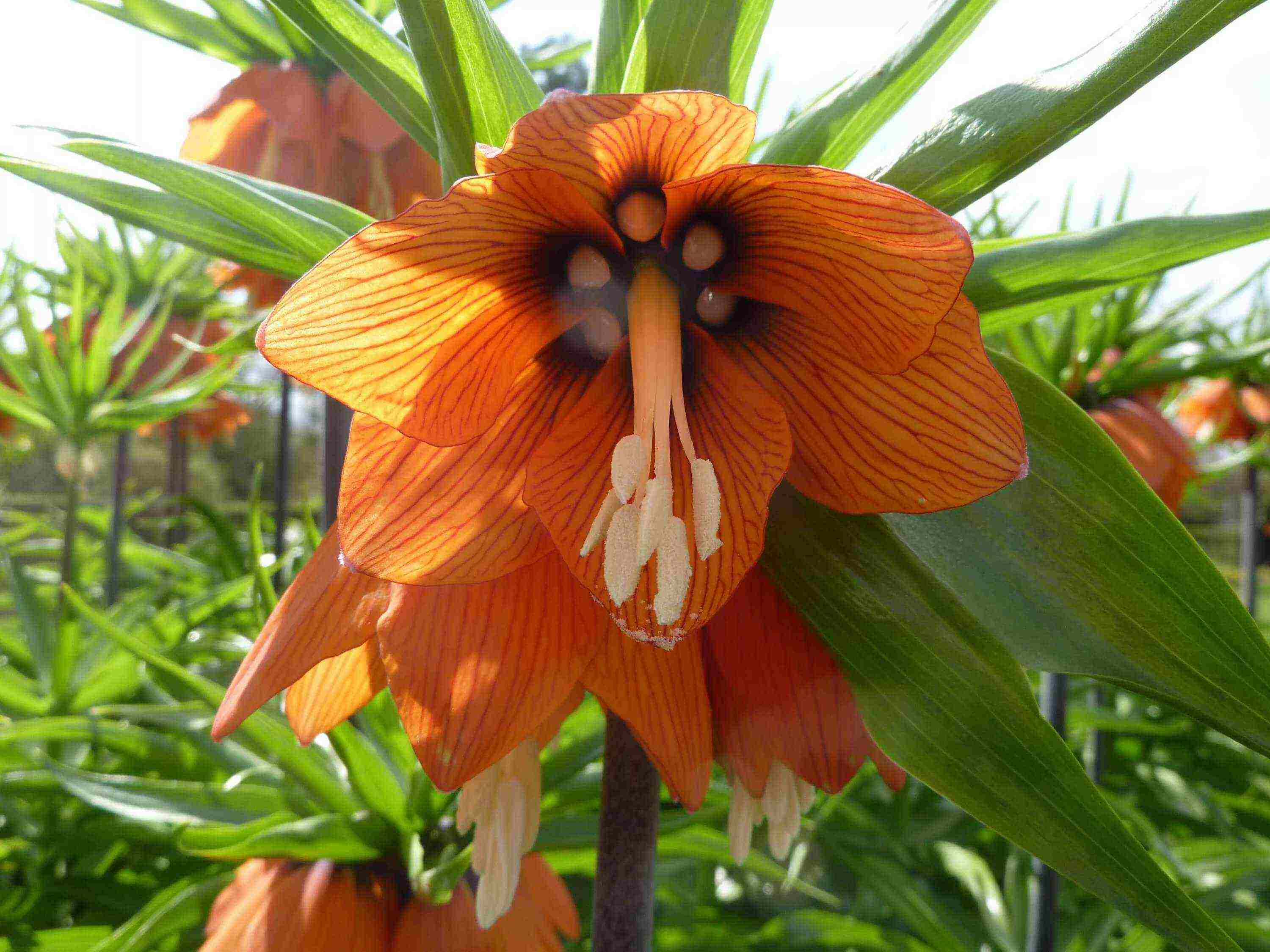 Fritillaria variety "Mikhailovsky"
Fritillaria variety "Mikhailovsky"
One of the most famous varieties of fritillaria "Mikhailovsky", unpretentious and resistant to temperature extremes, it has become a "favorite" among summer residents and professional flower growers. The plant is perennial, blooms with bright, copper-red flowers with a yellow border around the edge of the petals. The foliage is green, of medium length, narrow. The height of "Mikhailovsky" reaches 30 cm.
 Fritillaria needle-petaled "Akmopetala"
Fritillaria needle-petaled "Akmopetala"
A beautiful variety of hazel grouse, with bells of an unusual, pale green color, and a burgundy hue inside the bud. Flowering lasts up to three weeks, abundant, with medium-sized flowers.
The variety's resistance to wintering is high. The plant is unpretentious, undersized.
Fritillaria "Raskal Bach"
The variety is distinguished by bright large copper-pink flowers. Obtained in the process of painstaking work of breeders "Raskal Bach" belongs to the small-bulbous variety of fritillaria, and, due to this, occupies smaller areas, without damaging the peduncle.
Fritillaria "Garland Star"
The "Garland Star" variety belongs to the imperial group, it is distinguished by large flowers, orange-scarlet in color, forming a large crown. The plant is large, resistant, with a thick stem and a height of about a meter.
On the above species and varieties of fritillaria, the variety of this plant does not end, there are a number of other little-known, but unusually beautiful varieties of hazel grouse.
Secrets of the lush bloom of fritillaria
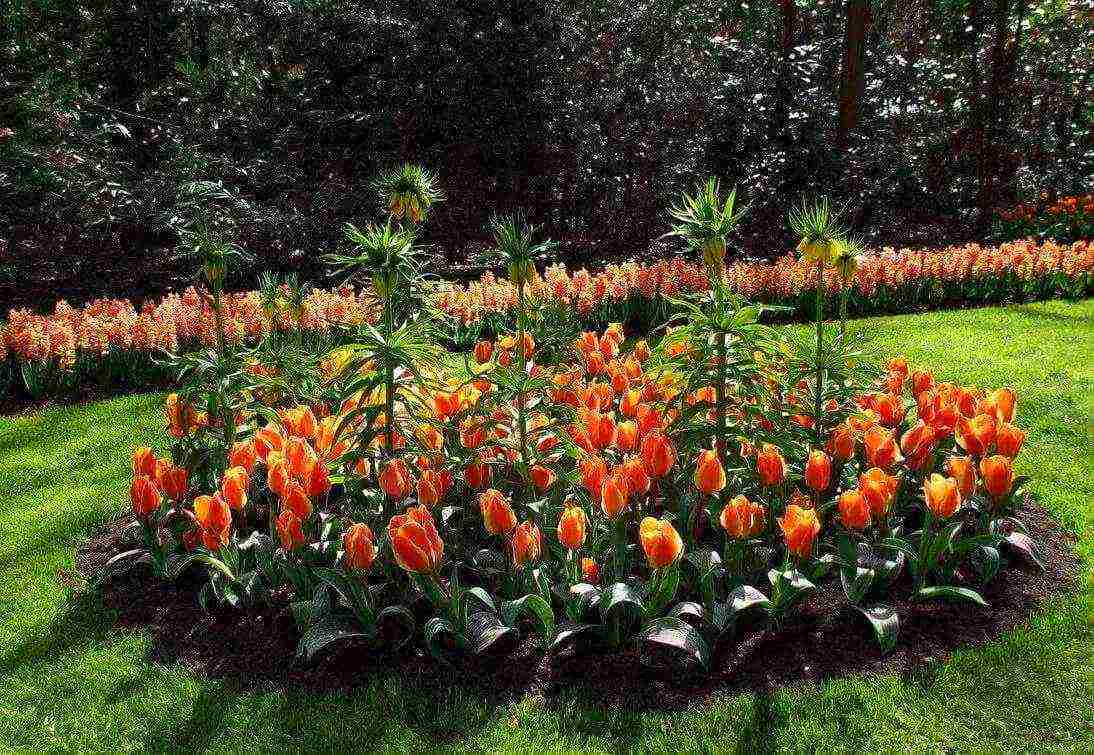 After winter sleep and warming the soil up to +12, fritillaria awakens and by the end of April it appears on the surface. Loosen the soil around the flower, remove weeds, apply phosphorus-potassium fertilizers.
After winter sleep and warming the soil up to +12, fritillaria awakens and by the end of April it appears on the surface. Loosen the soil around the flower, remove weeds, apply phosphorus-potassium fertilizers.
During the period of active growth, the hazel grouse will reach half a meter in a couple of weeks; during this period, fertilizing in the form of compost should be applied. And when the plant releases its first peduncle, apply root dressing in the form of ABA (station wagon) granules for garden flowers.
During flowering, monitor the moisture content of your fritillaria plantings and loosen the soil in a timely manner, this will saturate the plant with oxygen. Removing the seed box will increase the flowering time to 5 days. If you follow all of the above measures, fritillaria will delight you not only with lush and large flowering, but also with an unusually bright color of flowers.
Hello dear friends!
Let's talk today about imperial hazel grouse, about this magnificent and majestic flower. This is the real emperor of the spring garden.
For the first time I saw him in Anapa and he immediately conquered me with his singularity and splendor.
Grouse imperial looked like miniature trees, covered with large flowers and so beautiful that it was impossible to take your eyes off them! And, of course, I immediately decided that they should grow in my summer cottage.
And now I'll tell you more about what I learned about this plant. Grouse imperial (or fritillaria) are native to the Eastern Himalayas, the mountains of Iran and Afghanistan.
They came to Europe (first to Italy) and became known since 1553. Then, at the beginning of the 18th century, the imperial hazel grouses reached Holland.
Since 1746, 12 varieties of this plant have become known with white, yellow, red, orange flowers, with a double number of flowers in one inflorescence.
Little has changed since then in their appearance and, therefore, some varieties are of historical value.
It's hard to believe, but we see the same plants that the Italians saw four centuries ago. This is incredible!
Varieties as artifacts
The color of the varietal flowers of the imperial hazel grouse is quite diverse, but still does not go beyond the red-orange-yellow range.
Therefore, keep in mind that varieties with a blue, black, pink, purple color do not exist, and if such varieties are offered to you at flower bazaars, then such pictures are a common photomontage and deception of buyers.Be careful when buying bulbs!
I will describe those varieties of imperial hazel grouse that I planted:
"Imperial Raddeana" - this hazel grouse is the best in endurance in the most extreme conditions, with creamy yellow, large, bell-shaped, drooping flowers, which are collected 2-7 in a racemose inflorescence and blooming for 14-16 days;
"Imperial Rubra" - this imperial hazel grouse is the smallest, its height very rarely exceeds 60 cm, with red brick shades and crimson strokes inside the flowers, the petals of which with weakly expressed veins reach a size of 6.5 cm by 4 cm;
"Strip Beauty" - this hazel grouse blooms from late April to early May for a whole month, with huge bell-shaped flowers of a golden color with pronounced red stripes both outside and inside the petals;
"Imperial Lutea" - hazel grouse with beautiful large yellow flowers, 5-8 pieces per inflorescence, nectarines are surrounded by a white border turning into a green and then purple hue;
"Imperial Garland Star" - this hazel grouse has a strong, stable stem and much more flowers than all other varieties, they are large, forming a luxurious crown of bright orange color.
Reproduction methods
Grouse is mainly propagated by dividing the bulbs, but also by seeds. Seed propagation is not very popular, especially among amateur flower growers, since in this case we will have to wait about 7 years for the first flowering.
The seed method of reproduction is acceptable only for those who are engaged in industrial cultivation of these flowers, because this way you can get a lot of planting material.
During vegetative propagation, large bulbs are divided into two almost every year, while they give birth to babies much less often and their number is insignificant.
Grouse bulbs must be dug out very carefully and very carefully so as not to damage the bulbs, and most importantly, to find a baby that is small and poorly visible in the ground.
The hazel grouse bulbs should not be dried, and it is better to plant soon after digging and always immediately after purchase.
Growing and care
The imperial hazel grouse, of course, can grow in the garden with the very minimum care and will even grow without it. It will grow, but not bloom.
In order for hazel grouses to bloom well, it is necessary to fulfill several, albeit simple, but of great importance, requirements.
Landing site
The place for planting this royal flower must be chosen warm, semi-shady and, without fail, there are no drafts.
The soil should be loose and fertile enough. If your soil is heavy on the site, then drainage is necessary, since the hazel grouse does not tolerate excessive waterlogging at all.
It is best to use river sand as a baking powder, as well as humus, which at the same time will be a good fertilizer (10-15 kg / m2). We plant the bulbs in early autumn immediately after the appearance of new roots (if we have our own planting material) or immediately after buying the bulbs in the store.
The distance between adult bulbs should be at least 25-30 cm, and the depth at which we plant large bulbs should be about 20-30 cm, smaller ones - 13-20 cm and children - 6-10 cm.
Plantings must be covered for the winter.
We care properly
The imperial hazel grouse is a rather frost-resistant plant. Adult bulbs rarely freeze out with the correct implementation of all the rules of agricultural technology, but nevertheless, in winters with little snow, it is advisable to cover them with straw or spruce branches.
The thickness of the covering layer should be about 25-30 cm, and in early spring, the shelter should not be forgotten to be removed in time so that it does not interfere with seedlings. Young shoots of hazel grouse tolerate spring frosts well, even up to minus 6 degrees.
On cold, frosty matinees, the stalks of the hazel grouse freeze and lean to the ground, but as soon as the sun comes out, the plant comes to life and straightens out. Thanks to the strong stem, mature plants do not need to be tied up.It is necessary to loosen the soil around the hazel grouses very carefully, due to the fact that their roots are often located at the soil surface.
Therefore, it is better not to carry out loosening without special need.
The imperial grouse love fertilizing, but not foliar with a concentrated solution, since such fertilizing can cause leaf burns.
For top dressing, complex mineral fertilizers are suitable, which must be applied according to the standard scheme indicated on the package.
When to dig out?
It is best to dig up the bulbs when the aboveground part of the plant begins to turn yellow and dry out, this is somewhere in the middle - end of June.
There is no need to delay harvesting and wait until the stem is completely dry. If we delay this process even for 1-2 weeks, then we can destroy the plants. And moreover, the largest bulbs of rare varieties rot in the first place.
The same bulbs that are smaller and grown from baby or seeds are more viable and, although they put up with a delay in harvesting, it is also better to dig them out annually. Based on this, it is recommended not to leave the hazel grouse in one place for 2-3 years without digging. But still, many growers advise not to dig up hazel grouse bulbs every year and allow them to be grown for up to 3 years without digging. I will definitely conduct such an experiment.
It must also be remembered that during the dormant period (summer months), many bulbs are easily affected by diseases and pests.
After we dug the bulbs, we must carefully inspect them, remove dry films from them and rinse in a warm solution of potassium permanganate, and then dry.
If rot is found during examination, then it is necessary to carefully scrape it off with a blunt, clean knife to healthy tissue.
Then disinfect the wounds with iodine or green paint. After that, dry the processed onion at a high temperature.
Rot can appear during storage and on healthy bulbs, so it is imperative to inspect the planting material every week.
And when buying, I advise you to carefully examine the hazel grouse, so as not to buy low-quality bulbs.
How to save?
Before planting the bulbs of the imperial hazel grouse, it is best to store in a warm, dry and preferably ventilated room so that the daytime temperature does not exceed 30-35 ° C.
Since we dug the bulbs in June, the storage period will be short.
At the end of August, new roots and sprout begin to appear in the hazel grouse bulbs next to the old stem. And in very large bulbs, two sprouts can form at once.
By the time of planting, the bulbs usually grow quite long roots, with which at the moment we can not stand on ceremony.
Even if we damage them a little when planting, then the rest of the root thickens and, most importantly, the root begins to branch.
But if you are late with planting, then the roots must be treated with care and carefully laid out on the sides when planting, since they no longer have time to recover.
Using the advice from this article, it is not so difficult to grow imperial hazel grouses in your garden, and in a year you will enjoy the magnificent and lush flowering of these royal fritillaria.
Another useful quality
The imperial hazel grouses have another useful quality, though not yet confirmed by scientific research.
Due to the specific smell of the bulbs, hazel grouse can be used as a means of scaring away moles and bears from our site.
And although there is no scientific substantiation for these statements yet (or simply did not find it), the personal experience of summer residents shows that the mole leaves the summer cottage after several bulbs of imperial hazel grouses are planted directly into the mole exits.
At the same time, the bulbs of lilies, tulips and other flowers growing nearby are also preserved without damage.
I have imperial hazel grouses growing for the second year and if this statement is confirmed, then I will plant them throughout the summer cottage, since I have a lot of problems with moles and a bear.
Such a solution to the problem would suit me very much, firstly - the magnificently blooming hazel grouses decorating the garden plot, and secondly - the absence of pests))))
Dear readers, I am often asked why the imperial hazel grouses sometimes do not bloom. The comments have answers to these questions, but I want to invite you to watch a video on this topic.
See you soon, dear friends!
You can also read on this topic:
Tags: bulbous plants, imperial hazel grouse
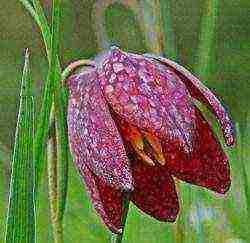 Growing hazel grouse (fritillaria) and caring for them does not present any particular difficulties for gardeners, when planting them in open ground, you just need to carefully choose a place: these flowers love the sun or a little shade, nutritious soil, not very abundant, but regular watering.
Growing hazel grouse (fritillaria) and caring for them does not present any particular difficulties for gardeners, when planting them in open ground, you just need to carefully choose a place: these flowers love the sun or a little shade, nutritious soil, not very abundant, but regular watering.
Grouse: varieties and varieties
Fritillaria - translated from Latin means "glass" or "glass", this name is associated with the shape of the flower - a large, bright, shaped like a glass or a bowl.
The hazel grouse got its popular name - "chessboard" due to the appearance of a "chessboard" perennial in color: its buds look like the cells of a chessboard with a uniform alternation of colors. This variegated variety gave the whole genus fritillaria the Russian name "hazel grouse", from the word "speckled".
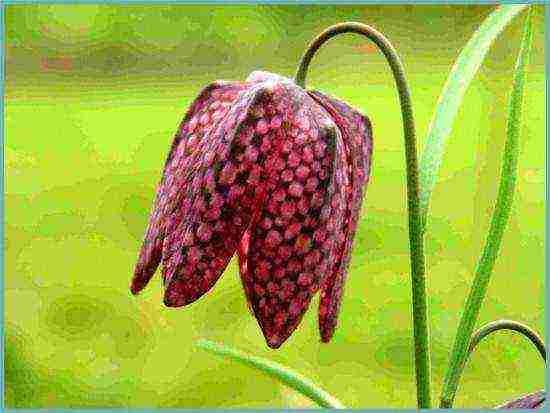
Grouse "checkerboard" - one of the most unusual flowers that are easy to grow by yourself
The varieties of hazel grouses are very numerous, currently about 180 species are known, which mainly grow in European countries with a temperate climate, in western Asia and in the North American states. Reproduction of hazel grouses is carried out vegetatively and by seeds.
Varieties of hazel grouse differ in color of its flowers, in size, in flowering time, among them there are inconspicuous, tiny plants, and there are also gorgeous giant varieties, but the "chess" variety is very popular among amateur gardeners.
- Fritillaria "chess" - refers to small-bulbous perennial plants. This variety of hazel grouse has two varieties - brown-burgundy and white-yellow cells. These varieties are low, growing only up to 15-20 cm in height, with small buds.
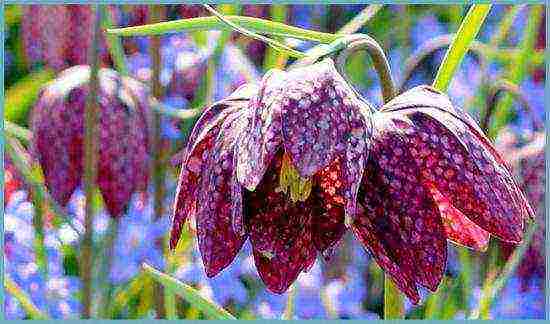
Fritillaria "chess"
- Fritillaria imperial - has a bright color of flowers, reaches a height of 80 cm.
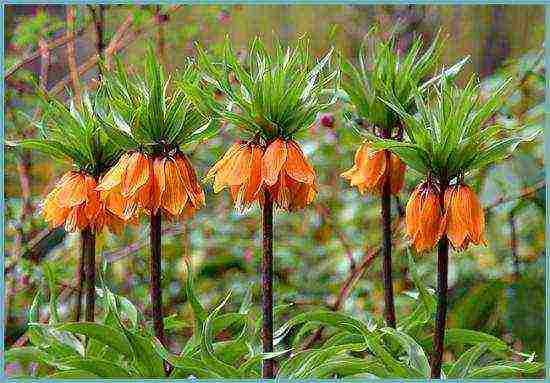
Fritillaria imperial
- Fritillaria needle-petalled - grows well in sun and partial shade, prefers moist soil. The yellow flowers with bright red veins appear in the open field in May.
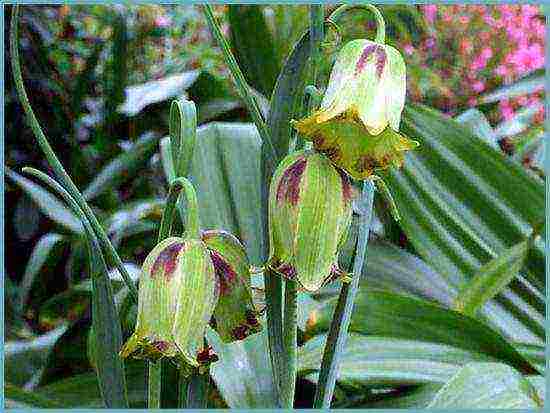
Fritillaria needle-petalled
- Fritillaria Kamchatka - bright purple glasses of flowers delight gardeners from May to June, but the seeds do not have time to set during flowering.

Fritillaria Kamchatka
- Fritillaria persian - a southern flower, but in the middle lane it tolerates the winter well if it is covered with dry leaves. Its delicate yellowish-green buds appear in mid-May, but not every year.
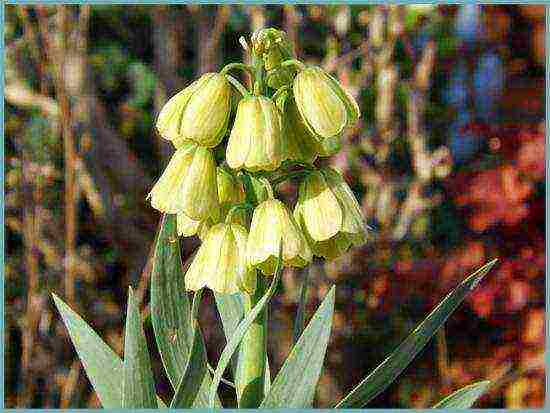
Fritillaria persian
Planting a plant
Like all perennials, sun-loving hazel grouses, planting and caring for which does not require any special effort, prefer fertile, well-drained soil.
Previously, compost or humus is introduced into the planting hole, in proportions - half a bucket of compost per 1 sq. m of plot, then drainage is laid, it can be sand or sifted humus, then a perennial bulb is placed.
When planting, be sure to straighten the roots. If the variety is undersized, then the bulb is buried to a depth of 6-10 cm, if tall varieties are planted - to a depth of 30 cm.In groups, the distance between small bulbs is 10-15 cm, between large ones should be at least 30 cm.

Hazel grouse
Growing some varieties outdoors can be done in slightly shaded areas, for example, hazel grouse grows well in sunny areas and in the shade. Grouse "chess" love that ash or lime was placed in the hole during planting.
Planting fritillaria is carried out at the very beginning of autumn, when roots appear at the bottom of the perennial bulbs, but it is not worth delaying, since the hazel grouses will not have time to bloom in May.
Plant care
The soil around this perennial plant should be covered with peat in order to avoid drying out in the heat, for example, in rockeries or rock gardens. Loosening the ground is not worth it, you can damage the roots located at the surface. After the flower has faded, if seeds are not needed, it must be removed so that the plant does not deplete.
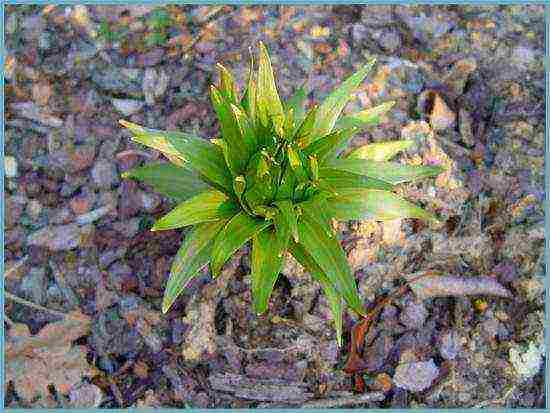
Mulch the soil around the hazel grouse and ensure proper watering
As a rule, in winter, if there is little snow, the plantings of fritillaria are covered with spruce branches or reeds to avoid freezing of the bulbs. However, the varieties of "chess" hazel grouse are quite unpretentious, do not require special care, and they are not very afraid of frost. If you plant them in early September so that they take root well before frost, then you do not need to cover them in winter.
Attention! Delicate "chess" hazel grouse needs a lot of sun. When grown in partial shade, the flower feels bad, blooms little. The flowers will be small even if the crop is properly cared for.
Fertilization and feeding
In early spring, these perennial plants need feeding. Nitrogen-containing fertilizer is applied to the soil in a dry form, and during the period when flowers appear, hazel grouses need to be fed with mineral fertilizer - 1 tbsp. spoon per square meter. Wood ash or chicken droppings can be added in the same proportions.
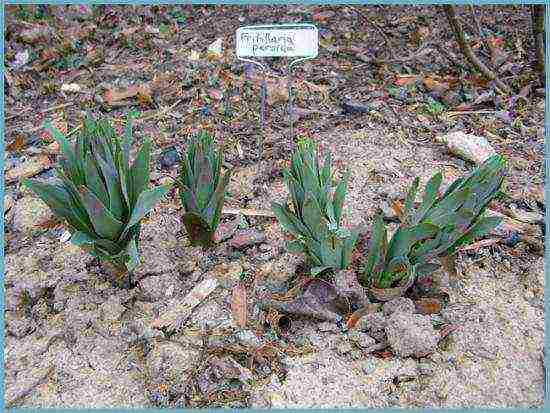
Feed the crop annually before and during flowering
Reproduction of hazel grouse
Reproduction of fritillaria occurs vegetatively, annually planted bulbs are replaced with new ones, and a daughter one is formed. The number of children depends on the type of perennial.
Bulbs of the "chess" variety are dug up and divided not every year, it is enough to do this once every 6-7 years. During this growing period, they do not stop blooming, but the peduncles no longer become. Such large-bulbous varieties as imperial, Persian, pale-flowered varieties are dug every year. Grouse with small bulbs (fox-berry, Mikhailovsky) can not be dug for 3-4 years, while covering it with black material to warm the bulbs.
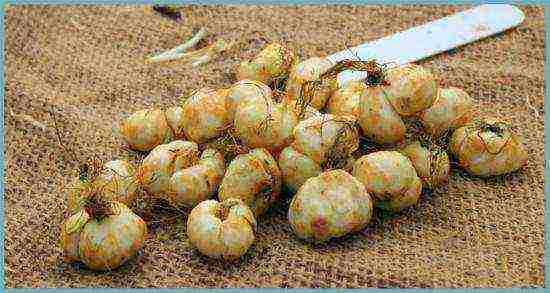
The easiest way to breed hazel grouses is to plant bulbs
If desired, the reproduction of hazel grouses, including "chess" ones, is carried out and from seed... For seed pods to ripen, favorable weather is required; if there is a lot of rain in spring, then the seeds can rot. In a warm place, in the open ground or in a greenhouse, a separate bed is prepared with fertile soil mixed with humus from the foliage. Seeds are planted in grooves, to a depth of 1 cm, the distance between them is 10 cm.On top, the seeds should be sprinkled with a layer of peat up to 2 cm.Cultivation of the bulbs lasts until next year, then, after the leaves dry, they are dug up and stored in a ventilated room until autumn. The bulbs of these perennial plants need to be warmed up at a temperature of about 30 degrees for several weeks in a greenhouse.
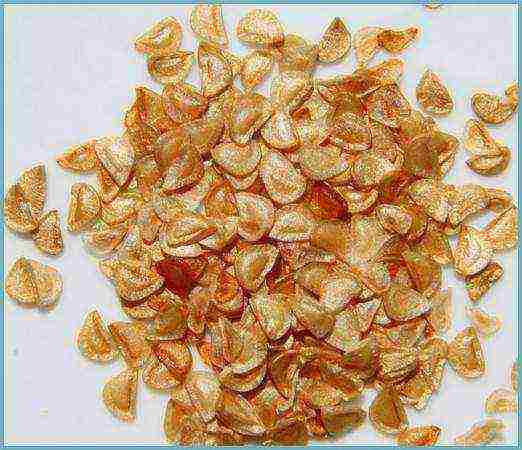
Hazel grouse seeds
The flowering of fritillaria grown from seed begins at 4-5 years, and in large hazel grouses - only at 7-8 years. Watering is moderate, the soil should be moist, but not damp, then it is generally better to reduce watering to 2 times a month. You need to feed the seedlings in the twenties of April and at the beginning of June, after flowering, with complex fertilizers in dry form.
Advice! You should not buy already flowering perennials for planting, they are often sold. Such a hazel grouse, even if it does not die, is very difficult to grow until the next flowering.It is for the "chess" variety that the bulbs are not overdried - the dry ones are no longer viable.
Reproduction of hazel grouse by bulbs gives a good repeatability of varietal traits; with the seed method, this is not always possible to achieve.
Diseases and pests
Grouse are not afraid of pests due to the sharp unpleasant smell of the bulbs, they smell like fresh horse dung. This smell scares off mice, rats and moles. The pest of this perennial is the leaf beetle - a red beetle that eats flowering buds and leaves. It is collected and treated with insecticides. Slugs are also very harmful to hazel grouse, and wireworms can pierce bulbs.
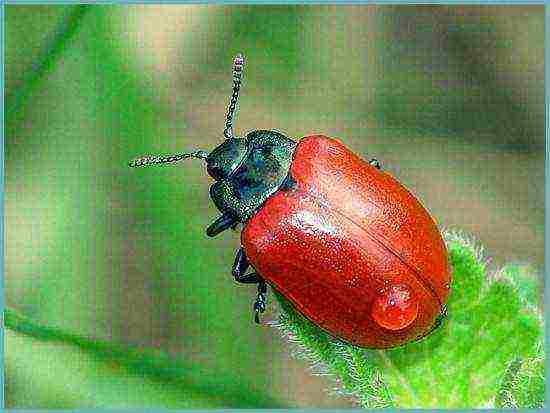
Beetle beetle
The hazel grouse are resistant to diseases, they do not suffer from viral diseases, like tulips and crocuses. Bulbs can rot from cold and wet weather, but rotten places can be cut off and treated with ash, coal, alcohol or even brilliant green, and dried.
The use of fritillaria in landscape design
Grouse varieties "checkerboard" are often used in the landscape design of garden and backyard plots. An ideal place for this variety of hazel grouse due to its low growth on alpine slides and rockeries. In an ordinary flower bed, these delicate "birds" will simply get lost.
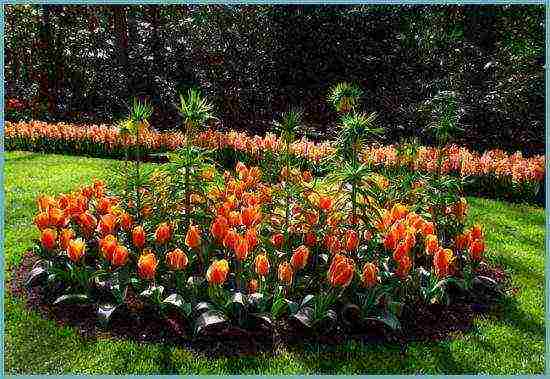
Grouse combined with tulips
Varieties of "checkerboard" hazel grouse can be used to decorate the lawn, planting them in separate islands, but it is impossible to mow such a lawn until the end of flowering, the hazel grouse will stop blooming. The neighbors of these checkered flowers used in landscaping gardens can, in principle, be other low perennial flowers that require less intensive watering, for example, phlox or primroses. A variety of photos of landscape compositions with the participation of chess flowers can be found in electronic and printed publications.
Other species, taller, such as Persian hazel grouse, fit well into the composition of the garden in group plantings with tulips, anemones, crested crestedlings - along the paths and in the flower beds. And the combination of imperial hazel grouse with undersized shrubs, conifers and climbing perennials is actively used in landscape design when creating mixborders and ridges.
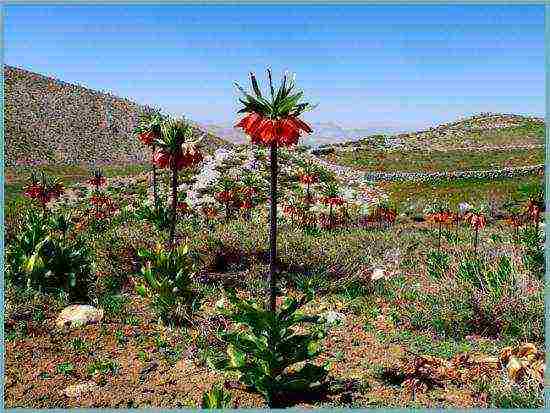
Grouse in landscape design
In conclusion, we can say that speckled flowers have been pleasing to the eye in gardens for a very long time, nevertheless, for some gardeners these perennial bulbs do not bloom, but it is not the flowers that are to blame, but the owners of the garden, who do not take into account the simple features of growing this rather unpretentious plant.
Planting hazel grouse: video
Grouse species: photo

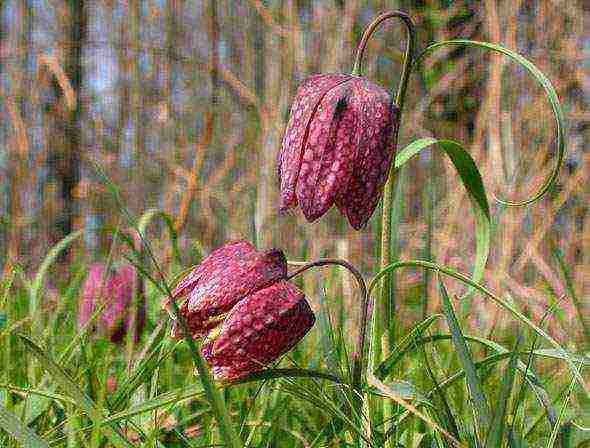


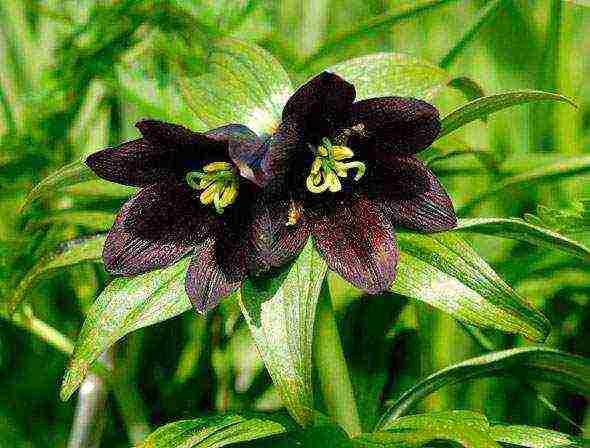
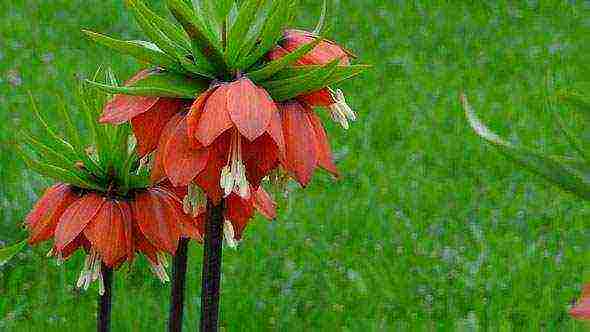


Flowers Chernyaeva V.V.
|
2015-09-08 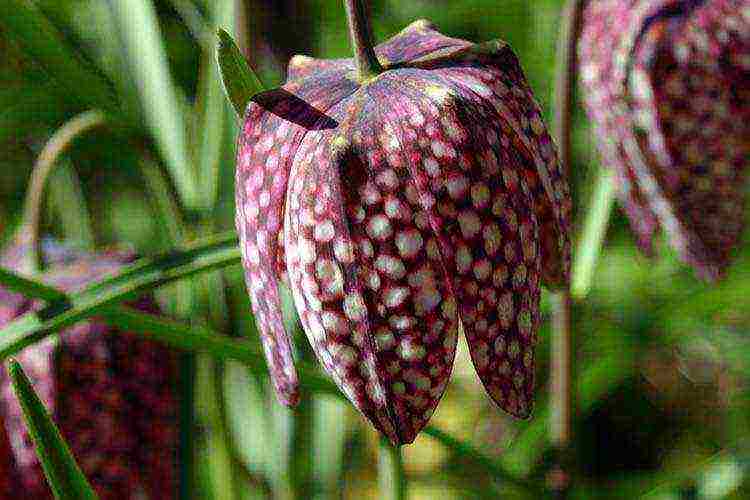
Fritillaria (popularly - hazel grouses) belong to the lily family. The name of the plant comes from the Latin word "fritilis", which means "chessboard" in Russian. This is due to the fact that some types of fritillaria have spots on the petals, located on them like a checkerboard. In total, there are currently more than 100 species of this plant.
Botanical description
Grouse are perennial bulbous plants with leafy stems, ranging in height from 10 cm to 1 m.
The stem bears whorled or alternate leaves, from the axils of which bell-shaped flowers (white, orange, yellow, reddish, purple) hang, which are collected in racemose or umbellate inflorescences.
Fritillaria leaves perform an additional function - they collect water that has got into them and direct it to the roots. This feature is explained by the fact that the plants come from regions with low rainfall.
The growing season of fritillaria is short. The plant blooms only one month a year - in May, and spends most of the time, like a tulip, in the form of a bulb underground.
The leaves of the plant very quickly lose their decorative effect, therefore fritillaria is planted in flower beds and mixborders among peonies, lilies, phlox and other late-flowering perennials, which mask it with their leaves during this period. Not recommended cut off the stem of fritillaria, otherwise its bulb will stop growing and remain small.
Choosing a landing site
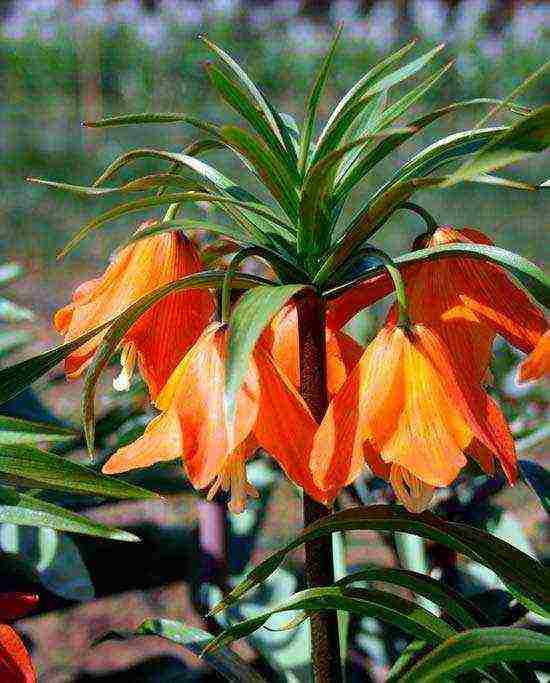
When choosing a place for planting fritillaria-hazel grouses, it should be remembered that it should be well lit (remember the alpine origin of hazel grouse), warm, drained (melt water should not stagnate), with light, loose and nutritious soil. The soil, if possible, should be well fertilized with humus, peat or rotted compost.
Plants can accept a little shading, but it is highly undesirable. In addition, hazel grouses do not like neighborhoods with large plants and tree roots.
Planting hazel grouses
The best time for planting and transplanting fritillaria-hazel grouses is the first 10-15 days of September. If you notice that the roots are starting to grow on the stored bulbs, then it is time to plant them.
Before planting, the bulbs are carefully inspected for disease and rot. Healthy bulbs are selected and, right up to planting, stored in sawdust or peat, avoiding prolonged exposure to the open air.
The planting depth of fritillaria bulbs depends on their size: large bulbs are buried by 20-25 cm, and small ones by 10-15 cm. In general, the following rule is true: the planting depth should be 2-3 times the size of the bulb. A well-buried bulb is like an anchor that keeps the plant upright throughout the growing season.
The distance between adjacent plants in a row and between rows should be at least 15-20 cm. Imperial grouse and other large-flowered varieties are planted at a distance of 40-45 cm.
Bulbs should be handled with care during planting, taking care not to damage them. After planting, it is recommended to mulch the soil around.
The need for a transplant
For hazel grouses, an annual transplant is recommended - this way they get sick less and bloom better. The transplant keeps the plants in good shape.
Young bulbs are dug up and stored in wet sand until planting, otherwise they may die. Adult bulbs are dug up 2-3 years after the aerial part has completely died out.
Care of fritillaria grouse
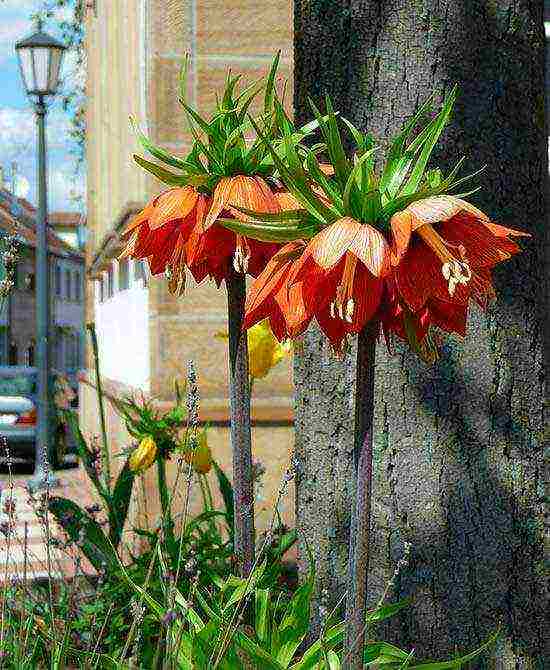
The main care for hazel grouses is watering, feeding and removing weeds. In dry, hot weather, plants need to be watered with warm water. The amount of water depends on the degree of dryness of the soil.
It is recommended to feed the hazel grouse with the help of mineral fertilizers. When feeding, do not allow the solution to get on the leaves and flowers of plants - they are sensitive and can "burn out".
When cutting fritillaria flowers for a bouquet, part of the stem and leaves must be left behind, otherwise the bulb will stop growing and die.
Reproduction
Fritillaria is propagated by seeds and baby bulbs. Seeds must be sown immediately after harvest, because during storage, they very quickly lose their germination.
Fresh fritillaria seeds give amicable shoots next spring. Seedlings are regularly watered and protected from direct sunlight. Seedlings live for 5–6 weeks, then die off, while small onions the size of a pea remain in the soil. Young bulbs are dug up and placed in a nutrient mixture. After 2 years, young bulbs of fritillaria-hazel grouse are suitable for planting in a permanent place.
Plants grown from seeds bloom in 4-7 years from the moment of planting.
Grouse in landscape design
In landscape design, the following types of fritillaria grouse are most common:
- Fritillaria Edward;
- Chess fritillaria;
- Fritillaria imperial (aka Grouse imperial);
- Fritillaria Caucasian;
- Fritillaria Kamchatka;
- Russian fritillaria and others.
Large-flowered fritillaria are used for planting in clean groups against the background of a lawn and in mixed groups with other perennials. The imperial hazel grouse and Edward's hazel grouse, which have large flowers, are indispensable in the design of reservoirs or green lawns.
Small-flowered fritillaria are good in mixborders, on rocky hills and rocky areas. For cutting, hazel grouses are used extremely rarely because of a very unpleasant smell.
Storing the bulbs
Under natural conditions, fritillaria grows in hot climates - in such conditions, the plant bulb, being underground, warms up well. In our climate, the conditions for flowering artificially created, warming up the bulb, otherwise it will not bloom. To do this, after the leaves die off, the bulb is dug out, dried and stored in a hot place with an air temperature of about +30 ° C.
Fritillaria bulbs well kept even without dry cover scales, but it is still better to store them in sawdust, sand or peat. After 50-60 days, the bulbs are transferred to a cool place, with a temperature of about +20 ° C.
During storage monitor the condition of the bulbs. If signs of drying out appear (the bulbs lose their elasticity), they are planted in the ground in the first decade of September.
Diseases and pests
Plants practically do not get sick and are not affected by pests.
If your fritillaria is sick, then the cause of the disease, most often, is improper care - decay from waterlogging, excess mineral fertilizers due to improper feeding, etc.
When decaying, the affected area of the bulb is cut out with a sharp knife and treated with an antiseptic.
Prevention of fritillaria diseases consists in changing the place annually and treating the bulbs with fungicides during plant transplantation.
V.V. Chernyaeva


